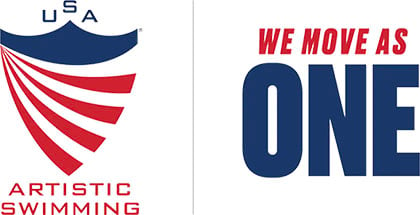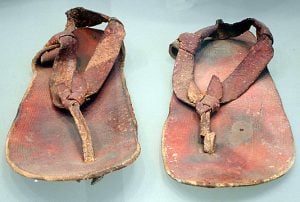
What if the best shoes you could have for running are not shoes but instead are sandals? Why do I say that? I’m going to answer in a kind of roundabout way. Let’s think about human history. People have been running happily, successfully, enjoyably, pain-free, injury-free in sandals for thousands of years, as far as we could tell maybe 10,000 years plus. If you think about shoes, prior to the invention of the modern running shoe, people were running in things that were practically sandals—really thin sole, really thin upper—without any problem.
Some people might say to me, “Steven, that’s the naturalistic fallacy. What you’re saying is that’s the way people did it in nature or with very minimal intervention, but that doesn’t mean it’s better for you. Maybe someone invented something good for you with modern technology.” That’s a really good question. If we’re going to assume that a modern running shoe is better than sandals or being in bare feet because of modern technology, well, we should be able to prove that, right? Where’s the evidence?
If you start looking, you will find that there is no evidence. You will find there is no evidence that the modern running shoe improves performance and reduces injuries compared to what people were doing for hundreds and thousands of years prior to that. Additionally, if you look at what running shoe companies do – every six months there’s a brand new technology that’s going to improve your running and reduce your injuries, and yet they never seem to land on one that works.
Think about it this way: The running shoe industry is a multibillion-dollar industry. Every year, just in America alone, if you could develop a shoe that reliably and demonstrably reduced injuries and improved performance, that’s worth hundreds of millions if not billions of dollars. These big shoe companies have a lot of incentive to do that. Why haven’t they? They’ve got all this research and scientists behind them, why haven’t they done it?
My argument is because they’re barking up the wrong tree. The basic idea behind what traditional shoes do is faulty to begin with and I’ll talk more about that in a second, but let’s just back up to, why sandals?
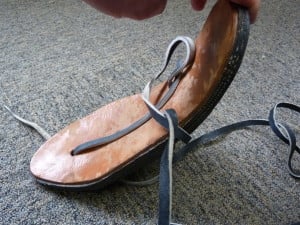
The answer couldn’t be simpler. A running sandal is everything you need and nothing more. If you think about what you need, why you wear a shoe, the most important reasons are to protect your feet and to hold that protection on your foot. That’s it. Let’s take a dive into running sandals and you’ll see what I mean.
To the left is a Tarahumara huarache. This is their running shoe. It is a sandal made out of a piece of used tire, some leather glued onto that, and a leather strap that you wrap around your ankle. That’s it – protection and something that holds that protection on your foot, little bit of comfort with the leather on the top. It’s all they need.
A pair of Xero Shoes are a very similar idea. Our Genesis Barefoot-Inspired Sandal has a really thin sole, really flexible, it let’s your foot move naturally, and just enough lacing to hold it on your foot. Can you actually run in this? Yes. We have thousands and thousands of people running in everything from casual 5Ks to ultramarathon. In fact, if you look at that couple below, that’s Jon and Mel Sinclair at the end of a 50-mile race when they were wearing just a pair of Ventures (the precursor to the current Genesis).
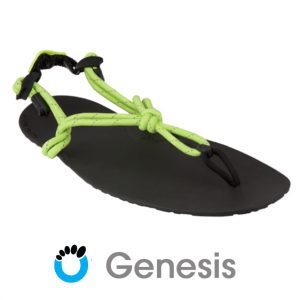 |
|
You might look and say, “Well, wait, you said protection and that does not look like much protection.” You’re right, it’s not. Mel and Jon run trail marathons, so you don’t need as much protection as you think if you’re paying attention to what you’re doing with your feet. If you want some more protection, we’ve offer a shoe with that as well.
Check out our Z-Trail Sport Sandal, really trail-friendly. What we’ve done here is taken the FeelTrue® rubber that we use on our Genesis, added TrailFoam™ to even out the bumps, and BareFoam™ to add a little comfort. Look at how simple it is. It’s just something to protect your foot and something to hold it on your foot. The Z-pattern webbing here is just very secure but don’t be fooled, the simple three-point design of huaraches has enough to hold on your foot for ultramarathons. The Tarahumara run hundreds and hundreds of miles in a pair of huaraches with the same three-point design.
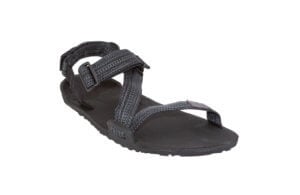
The Z-Trail Sport Sandal |
Another reason to think about running in sandals; we would argue that when you run in sandals compared to traditional running shoes, you can improve your running, you can get better, and maybe you can get healthier and get rid of injuries. I don’t have science to back it up, I’m not going to make any medical claims, but let’s talk about science.
Back in 2009, Daniel Lieberman from Harvard did some research that showed that when you’re in a pair of running shoes you’ll typically land on your heel with your foot out in front of your body and a straight leg because of this big thick padding around the heel. Every time you land you’re applying braking forces, literally like hitting the brakes on your car, and those forces go in what he calls an impact transient force spike. A very rapid, very extreme amount of force that goes straight through your heel and through your joints – through your ankle, your knee, your hip, your back, all the way up to your head.
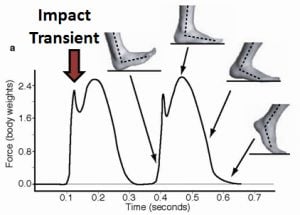
If you take off those shoes, if you have something that’s just barely on your foot, that force goes away. The reason that it goes away: you stop landing with your foot out in front of you and applying braking forces that hurts you. Instead, get your foot underneath you more and you land typically midfoot, flatfooted or on the forefoot and then let your heel drop down as your arch works naturally. You use your muscles, your ligaments, and your tendons as the springs and shock-absorbers that they are meant to be.
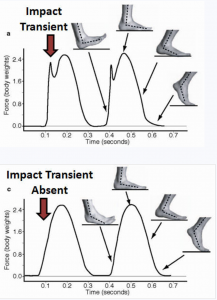
Let’s back up and talk about heels for a second. The first running shoe just lifted up the heel, added padding under the heel. Let’s look at heels. What shape is the actual heel bone? It’s a ball. Have you ever tried sitting on one of those Fitballs? It’s hard to balance because you don’t have any way of really stabilizing you from above. Look at the big thick heel of traditional running shoes, when you land on that, what does that do? There’s nothing to stabilize that landing and your foot deforms.
It’s the same idea with traditional running shoes. You don’t have anything stabilizing your heel from above when you’re landing on your heel. What running shoe companies did next is added pronation and supination control and motion control to prevent the instability they caused. When you’re not using regular shoes, if you’re using a pair of sandals, there’s no elevated heel, there’s no extra padding, and as a result there’s no need for all of that control and support. When you land on your heel, your foot is essentially landing and getting completely stretched out by the time it hits the ground. That puts a huge amount of strain on your plantar fascia. The next thing people started developing was arch support. Your arch wasn’t being used, so it’s being flattened out. So now you’re supporting the whole foot.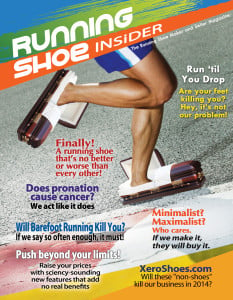
Let’s talk about support quickly. If you put your arm in a cast, what happens to it over time? It does not get stronger; it gets weaker. If you put your foot in a cast, it does not get stronger over time; it gets weaker. If you do this long enough, you will know why we refer to these as foot coffins. You’re making your feet progressively weaker and weaker. If you’re running in a pair of sandals where your foot bends and flexes naturally, you can actually use the muscles, ligaments and tendons the way they’re designed. If they’ve been asleep in foot coffins, sandals can strengthen them.
Am I saying you’re absolutely going to strengthen your feet? No, we don’t have some specific bit of science that goes along with that, but think about it logically. Traditional shoes do not let your foot bend. It’s like being in a cast. Minimalist sandals let your foot do whatever it wants because there’s nothing getting in the way. Which do you think might let your foot work more naturally, especially if you’re doing things that require foot strength? That’s all I’m going to say about that.
Why else might you like to run in a pair of sandals instead of running shoes? The freedom. Oh my gosh. All you need is a little bit of lacing holding the sole on your foot, and a little protection. When you feel the lightness and the freedom that you get because the air that’s moving around your foot. There’s nothing on top of your foot, your toes can flex without having anything in the way. Just that little bit of fabric, when you feel that on your toes, for many people it will restrict your movement because your body goes, “Oops, something in the way, better not do that.” There’s nothing restricting your movement in a pair of sandals.
The fit, I don’t know about you but traditional shoes are not even close to foot shaped. Even minimalist shoes, while the forefoot is closer to the shape of a foot, the midfoot area, many feet are not that thin here and still have unnecessary support. With sandals you won’t have that issue because we make them wide enough to allow your foot to fit properly. With our Genesis sandal or our do-it-yourself kits where you can make your own sandals the way people have been doing it for thousands of years, you can trim these to fit your unique foot shape, so you get something that fits your foot, not something that squeezes your toes together into a giant point. Whose foot is pointy like traditional shoes? Not very many people.
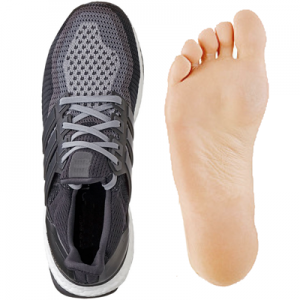
Really quick aside: Don’t confuse barefoot shoes with sandals, or with bare feet. There was a study that came out that showed that most people in barefoot shoes weren’t making the form changes that I talked. There’s still enough padding and enough protection that they can’t feel the ground. They can’t feel what’s happening if they’re running incorrectly. If they’ve been running incorrectly, up until now, there’s no feedback that says, “Hey, you might want to try something a little different.” So, just be careful if you make a transition.
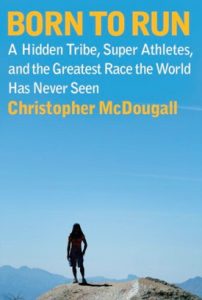 In 2009 and 2010 the idea of barefoot running became more popular mostly because of the success of the book, Born to Run. The running shoe companies started adopting these terms like “barefoot shoes” to claim that you were going to get the same benefit in their product that you would if you were barefoot. There’s no evidence whatsoever.
In 2009 and 2010 the idea of barefoot running became more popular mostly because of the success of the book, Born to Run. The running shoe companies started adopting these terms like “barefoot shoes” to claim that you were going to get the same benefit in their product that you would if you were barefoot. There’s no evidence whatsoever.
Think about this: When you’re running in a huarache style sandal, it’s like you’re being barefoot but right before your foot hits the ground someone just throws a piece of rubber on the ground underneath you. There’s nothing getting in the way. If you run in a pair of barefoot shoes, they are flexible in the forefoot, but totally stiff through toe and midfoot, and again, doesn’t really fit. Don’t confuse barefoot shoes with sandals, which give you a whole different set of performance characteristics.
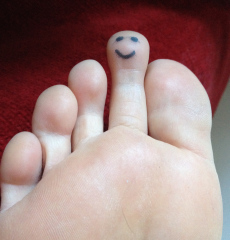
Just because a shoe looks like feet, like Vibram FiveFingers shoes, doesn’t mean they act like feet. If those shoe had fit my feet—I have Morton’s toe, my second toe is longer—if they had fit my feet I probably would have never started Xero Shoes. Because they didn’t fit my feet, I started looking for alternatives and started making barefoot-inspired sandals. That’s how it all began.
Speaking of those particular products or any shoe, something else you don’t get with sandals – smell. Or, marital problems. We know people who have practically gotten divorced over the smell of their spouse’s FiveFingers or running shoes. When your foot is encased in something that can get moist and dark and hot, that’s where bacteria grow. That leads to odor and other problems as well. In a pair of sandals where your feet are free, you don’t have that issue.
Backing up really quick, you don’t need to run in a pair of sandals. You don’t need to use a sandal for running. You can use them for recovery if you want. If you want to use a pair of sandals just for recovery, you can. Run in a pair of traditional running shoes and then recover in sandals. You might want to ask yourself, “Why am I having to recover?”
What I can tell you is; if you use your feet naturally, you will probably that you eliminate the need to recover. You’ll get some authentic muscle soreness, and I mean if you’re running properly you’re not going to get unnecessary soreness. You don’t need to have ankle soreness or calf soreness or Achilles soreness, but 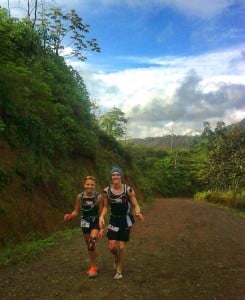 you could feel at the end of a long run that you have used your feet. That’s one thing, but not the kind of thing where you feel like you need recovery, where you can’t move and you just need footwear to get you from place to place.
you could feel at the end of a long run that you have used your feet. That’s one thing, but not the kind of thing where you feel like you need recovery, where you can’t move and you just need footwear to get you from place to place.
Backing up again to Jon and Mel as an example, they did a 256-kilometer seven-day stage race across Madagascar in a pair of our Amuri Venture sandals (now the Genesis). At the end of the race all the people who were in shoes, they’d been going through water and out of water, they were wearing socks or taking off their socks, and everyone else, their feet were mangled – skin was coming off, nails were coming off. They were totally, totally fine. No need for recovery.
If you don’t want to run in a pair of sandals, totally fine. Use them for taking a walk or going for a hike or just enjoying how it feels. Feel the freedom, feel the fun, feel the world. Give it a try.



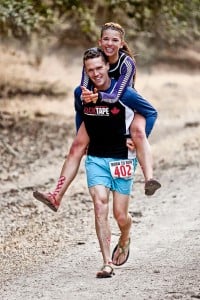
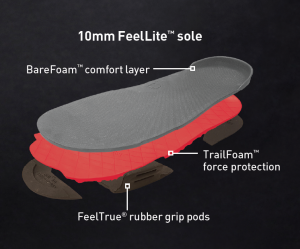


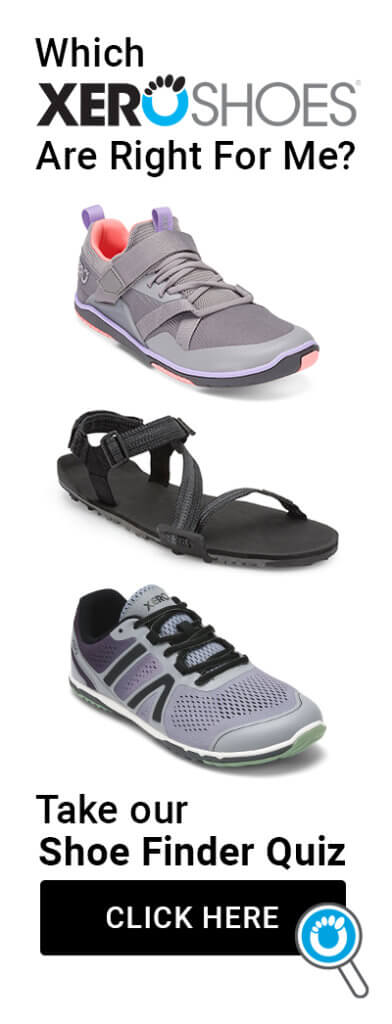




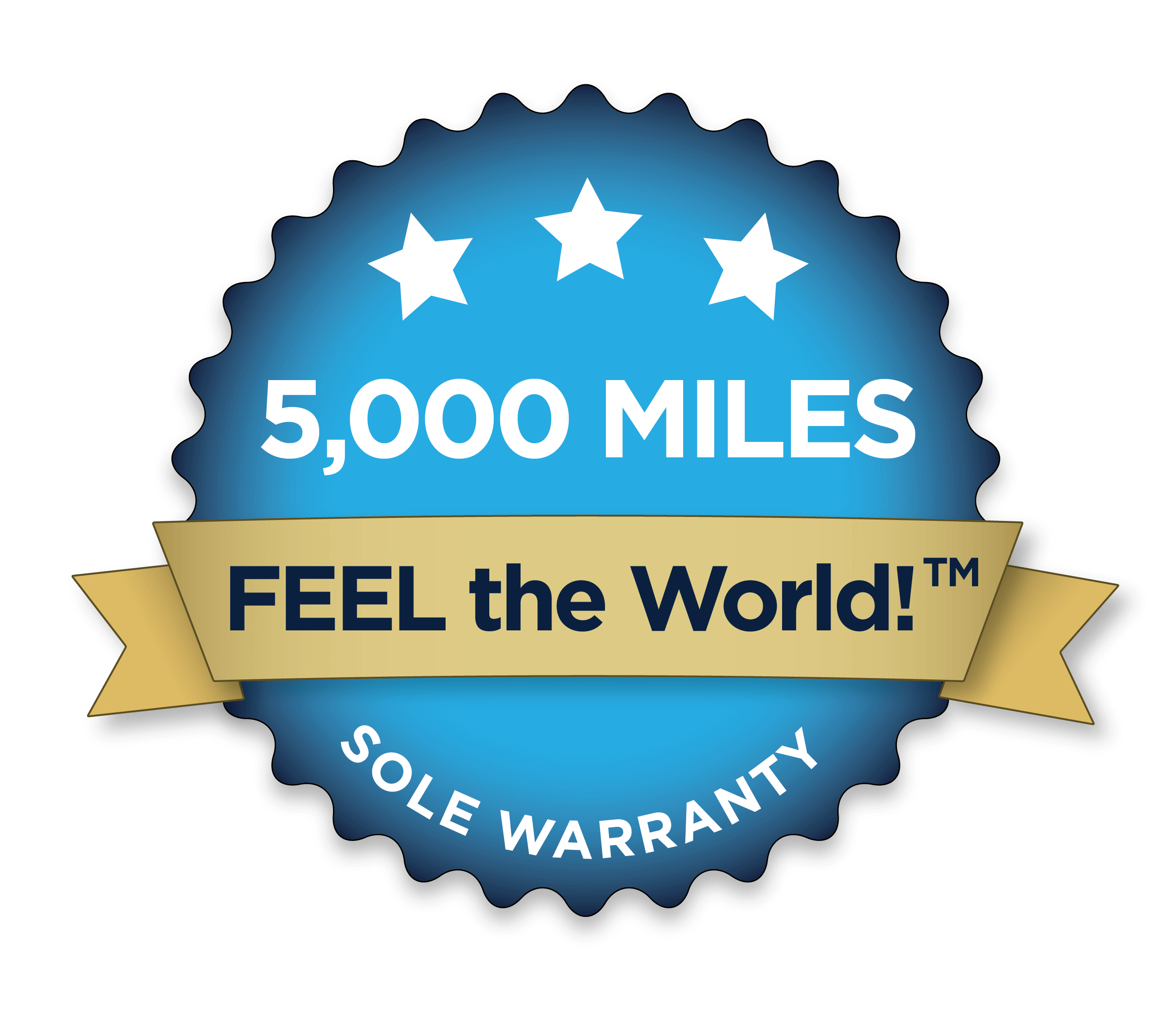
 Fostering honest and responsive relationships between businesses and consumers.
Fostering honest and responsive relationships between businesses and consumers.